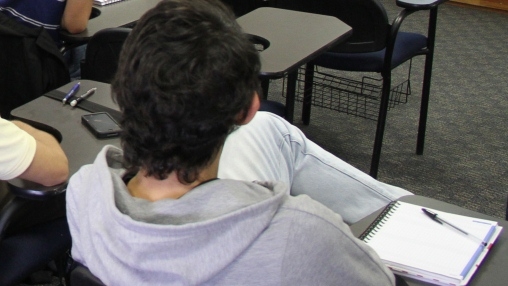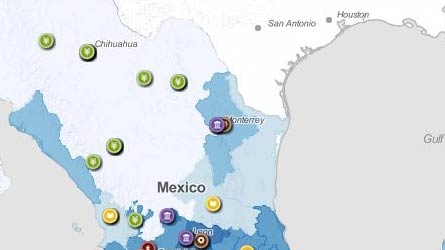Challenge
In the early 2000s, the competitiveness of the Mexican economy was declining. On the World Economic Forum’s Global Competitiveness Index, Mexico slid from 34 in 1998 to 48 in 2004 (out of 104 countries). A well-educated labor force was seen as one of the factors that would contribute to improved competitiveness by improving labor force productivity and shifting Mexico towards a knowledge-based economy.
However, the supply of workers with tertiary education (colleges, universities, technical institutes, nursing schools, and the like) was constrained by several factors, including:
- Low enrollment in tertiary education (21 percent gross enrollment rate compared to 31 percent in other middle income countries).
- Unsustainable and unequal public financing to expand tertiary enrollment over the long term.
- Limits to the expansion of enrollment in private tertiary education institutions due to the costs entailed.
- Low availability of student loans, with only 2 percent coverage for the total amount of students enrolled in tertiary education.
- Unequal access to tertiary education in Mexico, with less than 2 percent of young people from the poorest quintile enrolled in tertiary education and 3.5 percent of indigenous youth attending tertiary education as opposed to 26 percent from the wealthiest.
Approach
In addition to financing around 29 percent of the PRONABES scholarship program for higher education students demonstrating financial need, the project’s technical assistance strengthened the institutional capacity of other components of the PRONABES program.
Technical assistance helped improve the program’s management information system, which was essential for improving the flow of information between the states and the national coordination office. It also generated systematic information at the national level through the collection of 129 variables related to students’ personal and socioeconomic characteristics, which significantly improved the ability of PRONABES to target and supervise scholarships at the state level.
The project also refined and verified the national application of its pro-poor and pro-Indigenous peoples targeting criteria and addressed the transition from upper secondary to higher education by piloting early interventions to encourage talented low-income and indigenous students to enroll in tertiary education. In addition, it provided financial support to expand an existing program for assistance to indigenous students in tertiary education institutions.
Results
The project contributed to a number of results:
- Increased the number of tertiary education graduates from 359,635 in 2005 to 475,584 in 2011 by removing financial barriers.
- Financed about 390,000 scholarships.
- Increased the share of PRONABES women beneficiaries from 55.8 in 2004-05 to 56.71 in 2010-11.
- Increased the share of 18-24 year old students in tertiary education from households in the two lowest quintiles of the income distribution from 5.5 in 2004-5 to 20.6 in 2010-11.
- Increased the percentage of PRONABES students on the conditional cash transfer program, Oportunidades, during upper secondary education from 8.7 percent in 2004-5 to 20 percent in 2010-11.
- Increased the share of indigenous students in tertiary education from 5.2 percent in 2004-5 to 12.6 percent in 2010-11.
- Increased the retention rate of PRONABES beneficiaries from 65.3 percent in 2003-4 to 87.3 percent in 2010-11, and assisting 56.9 percent of students with PRONABES scholarships to finish their program of study.
Bank Contribution
The Bank contributed US$171 million. Most of the Bank funds supported PRONABES (US$167 million); the remainder provided support for disadvantaged students and analysis and institutional strengthening. The total cost of the project was US$289.88 million
Moving Forward
The current education strategy explicitly mentions the government’s intention to increase the coverage of PRONABES in all tertiary education subsystems, as an important shift towards demand-side financing. This has been reflected in the steady annual increase in the federal and states financial contributions to PRONABES (12.9 and 14 percent of the overall PRONABES budget, respectively, since 2006), more higher education institutions joining PRONABES, and the number of universities that have institutionalized the academic support units for indigenous students (17 out of 24).
In addition, the government has shown continued interest in a follow-up Project with the Bank to (i) further refine targeting of PRONABES financial support and improve its efficiency, (ii) achieve greater coordination between PRONABES and other scholarship and loan programs (i.e. reimbursable grant scheme), and (iii) renew support for the development of a policy, regulatory, and financial framework for tertiary education student loans from both public and private sources.
Beneficiaries
The number of PRONABES beneficiaries increased from 161,787 in the 2005-6 school year to 310,690 in 2010-11.The expansion of the number of PRONABES beneficiaries coming from poor households and the increase in the share of Indigenous people, Oportunidades recipients and women have been positive in terms of supporting poverty reduction, gender equality, and social development.
More directly, poor tertiary education students that have benefited from the program state that PRONABES scholarships helped them attain higher academic achievement and graduate on time from tertiary education. Moreover, some students believe that without the support they would have never continued with their tertiary education studies.


